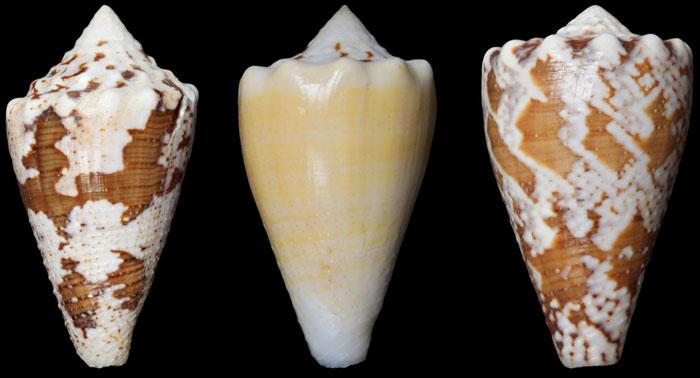A compound found in the venom of sea snails has been discovered to block pain, and does so by targeting a different molecular pathway to that used by opioid painkillers.
With estimates that more than 90 Americans die every day from an opioid overdose, a new treatment formulated from the venom compound could provide an alternative to overused opioid medications – a crisis that's been described as the worst drug epidemic in American history.
The pain-killing compound, called RgIA, is a peptide that naturally occurs in the venom of Conus regius, a small sea snail species with a cone-shaped shell, which is common in the Caribbean Sea.
"Nature has evolved molecules that are extremely sophisticated, and can have unexpected applications," says biologist Baldomero Olivera from the University of Utah.
"We were interested in using venoms to understand different pathways in the nervous system."
 Conus regius. Credit: My Huynh
Conus regius. Credit: My Huynh
Previous research looking into the effects of RgIA had examined its potential for pain relief in rodents, but the basis by which the compound acted was unclear.
To find out what was going on, Olivera's team used synthetic chemistry to engineer 20 analogues of the RgIA compound, each with a slightly different molecular configuration.
Using computer modelling, they found that RgIA provides a molecular fit with a pain pathway in rats called α9α10 nicotinic acetylcholine receptors (nAChRs), which suggested it could be blocking the receptor when it binds.
The pathway works as part of the central nervous system, responding to the neurotransmitter chemical acetylcholine, in addition to the drug nicotine.
One of the analogues they came up with, called RgIA4, also appeared to bind tightly with the human version of this pain receptor.
To see whether RgIA4 was effective for pain relief, the researchers administered the compound to rats and mice that had been given a chemotherapy drug that causes extreme sensitivity to cold and touch.
"Interactions that are not normally painful, like sheets rubbing against the body or pants against the leg, become painful," explains one of the team, J. Michael McIntosh.
The rodents given RgIA4 did not experience pain, but untreated animals did when given the chemotherapy medication. In addition, genetically altered rodents that had their α9α10 receptor removed also did not experience pain.
The researchers suggest the results are evidence that they've isolated the molecular target that the venom compound acts upon – but of course, it's still early days for the analogue.
There are no guarantees that just because RgIA4 blocked the pain pathway in rodents that it will do the same in people – despite the molecular modelling.
But the researchers are hopeful that future studies will show that we've got a new mechanism for pain relief here, and one which could provide a much-needed alternative to opioids.
If that's the case, another promising thing about the synthesised compound is how long-lasting it seems to be. While RgIA4 worked its way out of the rodents' bodies in about 4 hours, the painkilling effects persisted long after.
"We found that the compound was still working 72 hours after the injection, still preventing pain," says McIntosh.
We'll have to wait and see if future research with RgIA4 backs up this positive beginning. The researchers are currently laying the groundwork for a pre- clinical trial, and if that succeeds, clinical trials with human subjects could be the next step.
"What is particularly exciting about these results is the aspect of prevention," says McIntosh.
"Once chronic pain has developed, it is difficult to treat. This compound offers a potential new pathway to prevent chronic pain from developing in the first place and also offers a new therapy to patients with established pain who have run out of options."
The findings are reported in Proceedings of the National Academy of Sciences.
